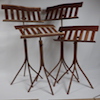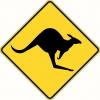I call it a slick but I know that's wrong. What's the best size / type chisel to be chopping these soft cedar timbers?? That steel ring at the end isn't exactly made for hand work but good for hammer. I need a couple more, this one has has been working well but I bet there's better!
IMG_1437.jpgIMG_1439.jpg





 Reply With Quote
Reply With Quote








